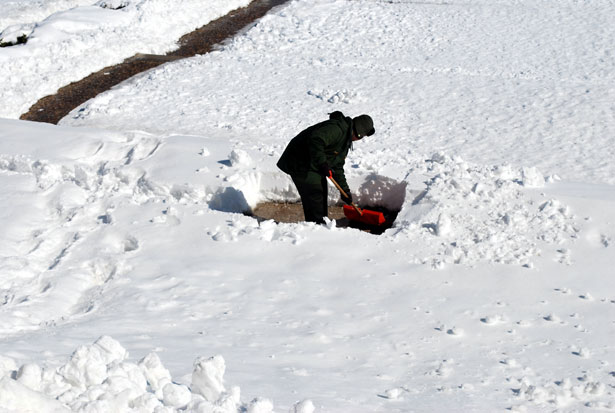One positive about the winter snow: your lawn looks as nice as your neighbours!
In Calgary, clearing snow from your driveway and sidewalk is a daily ritual, much like brushing your teeth. Unlike brushing your teeth, snow shovelling can be a demanding physical activity. As with any demanding physical activity, there is a potential for injury.
Two tips for minimizing injury risk include selecting a snow-specific shovel (with the proper blade) and choosing the correct height. With the blade on the ground, the handle should come to chest height. A longer shovel decreases back strain because you aren’t required to bend as far, but a shorter shovel increases the efficiency of lifting the snow. In terms of your positioning, one hand should be closer to the shovel to decrease the lever arm. Some shovels are designed with a bent shaft to decrease back strain when lifting. These are an option, but may not feel right for everyone, so be sure to try the shovel out and consider your own situation!
Snow removal needs to be taken seriously and treated like any other physical activity you would engage in. Warming up and cooling down are recommended to minimize muscle imbalances, prevent injury, and improve your ability to shovel for longer. Dynamic stretches before shovelling will prepare your muscles for the powerful movements required to push, lift and toss the snow. This could include arm swings, leg swings, back rotations and extensions. Make sure you keep control of the movement (no flinging or throwing motions). Try 10-15 repetitions of each movement. After shovelling, you can do ‘static stretching’ which includes holding a stretch for 20-30 seconds. You may feel light resistance in your muscles, but you should never feel pain during a stretch.
Stay warm!










